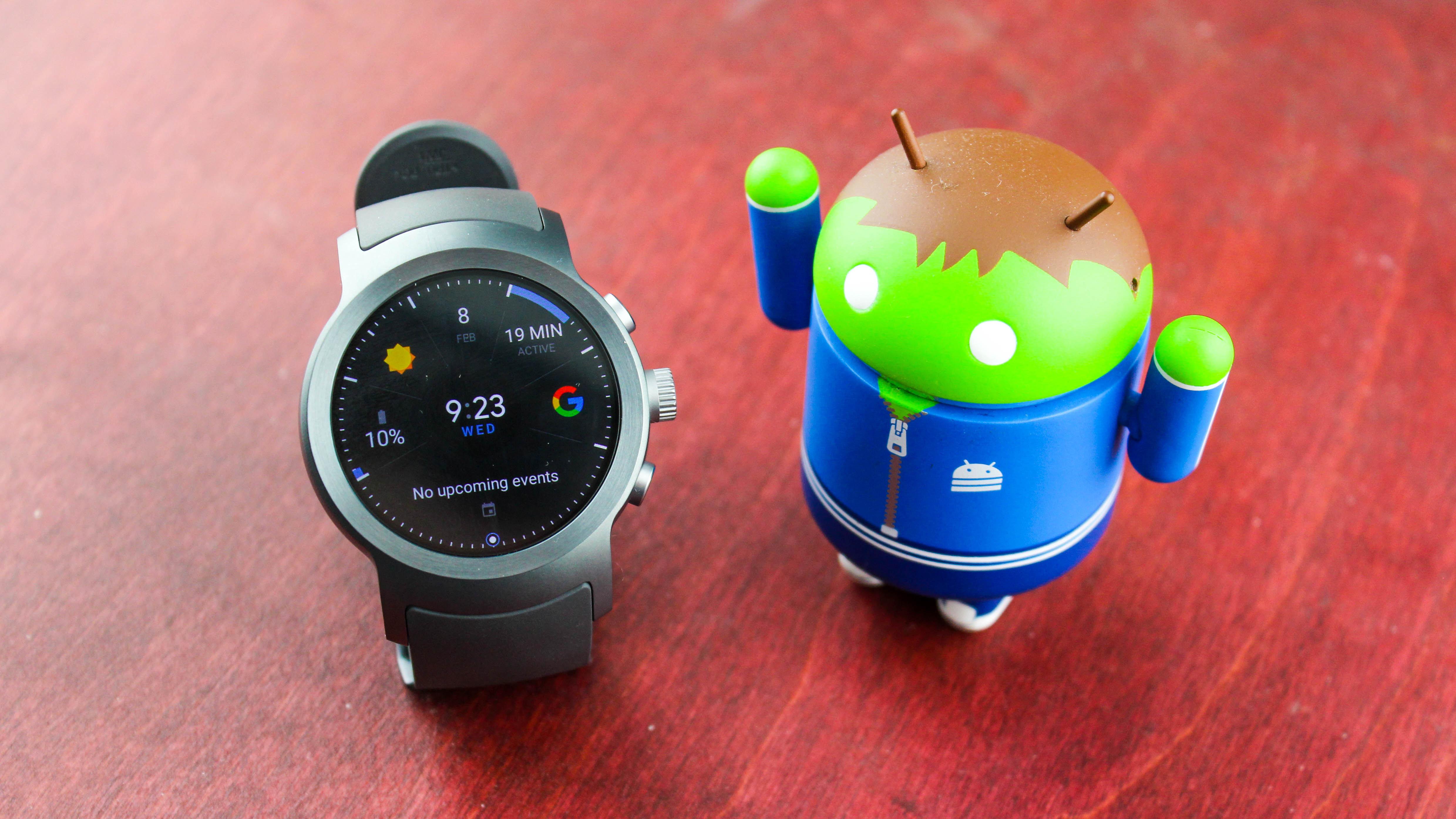Why you can trust TechRadar
Wear OS and apps
- Revamped wearable operating system
- Apps can be installed from the watch
- There still aren’t enough apps
The LG Watch Sport is more than just an iterative, athletic-themed smartwatch, and the Korean company’s fourth Android smartwatch since 2014. The hardware is just half the story.
Android Wear 2.0 marked its debut on the LG Watch Sport and the LG Watch Style – and there are a lot of changes here.
We'll cover them below, but note that since the launch of the Watch Sport it and indeed most wearables that once ran Android Wear have now been updated to Wear OS.
That was initially little more than a re-branding of Android Wear 2.0, but other changes have also now been made, including a revamp of Google Fit and of the main smartwatch interface, making it cleaner and slicker to navigate.
The changes mean that the LG Watch Sport is still up to date, but as most Google-powered watches now have these changes it's also lost one of its initial selling points (the presence of software that you couldn't find on many other devices).
Read on for an overview of our time using the Watch Sport with Android Wear 2.0, and note that the bulk of this still applies, it's just no longer new or unique to the LG Watch Sport.
Google’s Material Design ethos flattens previously embossed menus and icons, making way for a modern-looking interface. The themes are also darker, so the entire UI is easier on your eyes and on the watch's battery.
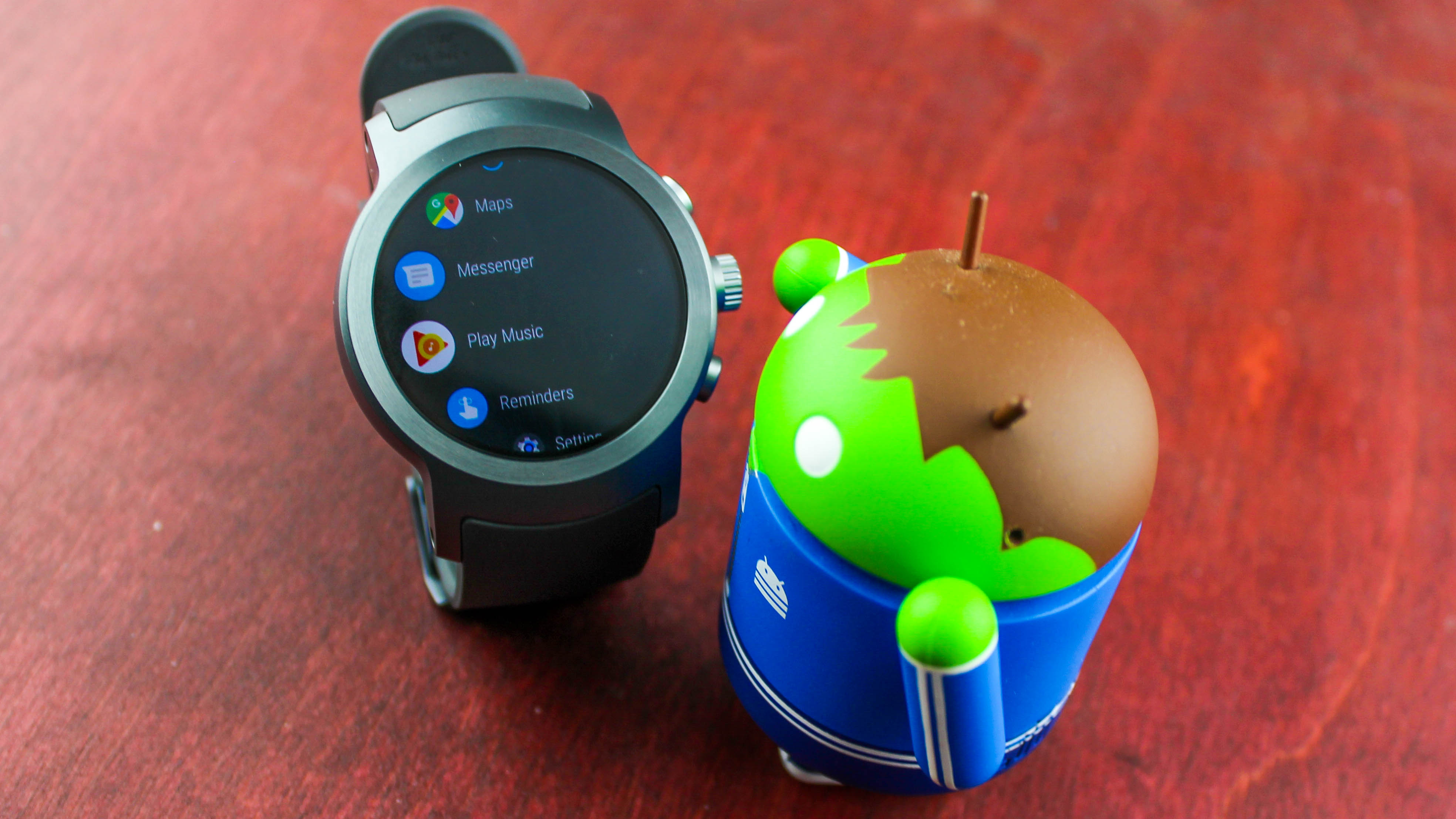
Surprise, surprise, circular smartwatches remain popular, so someone named Captain Obvious told Google to make more round menus that better fit the trendiest watch style.
Scrolling through the new crescent-shaped app launcher menu allows you to see more of your apps at once, as you whip them around the watch face perimeter via the rotating dial.
An even bolder change to Android Wear 2.0 apps comes in the form of standalone apps – these can be installed from a Google Play Store that now lives on the watch.
You never have to rely on your phone to add new apps or watch faces. Standalone apps are faster and, for the first time, you can download apps and faces if you’re using an iPhone. Apple’s app store restrictions led to a barren iPhone Android Wear app, relying on pre-installed items. So this is a great workaround, even if iPhone compatibility is still hobbled elsewhere.

Here’s the problem though: we only felt compelled to keep using a few third-party apps we downloaded to the watch. Grocery list ‘Bring!’ let us keep both hands free while checking off our list; American Airlines let us see our QR code boarding pass; and Kwikset's Kevo app let us into our front door without the need for a key.
Of course, even when more new apps do come onboard, you’re more likely to rely on the pre-installed apps and notifications, just like Apple Watch users do.
To get the best of the LG Watch Sport you’ll need an Android phone. Features like Google Assistant and Android Pay demand it, while Google Fit leaves you hanging without a iPhone app counterpart; your stats are viewable on either the watch or the web.

Google Assistant, which debuted on the Google Pixel and Pixel XL, brings its smarts over to the watch. Whenever we pressed the rotating button in, we were greeted with a silent Google Assistant prompt: How can I help you?
It understands context, like it does on the phones and Google Home. Asking “What is a zebra?” gives you a Wikipedia summary. Requesting “Show me a picture of it”, lo-and-behold, still brings up zebra photos. Assistant knows what ‘it’ is; Siri just refers you to the scary Stephen King clown.
This has become our standard Google Assistant test, so our zebra knowledge expands tenfold with every new Assistant product launch. Fun fact: they can sleep standing up.
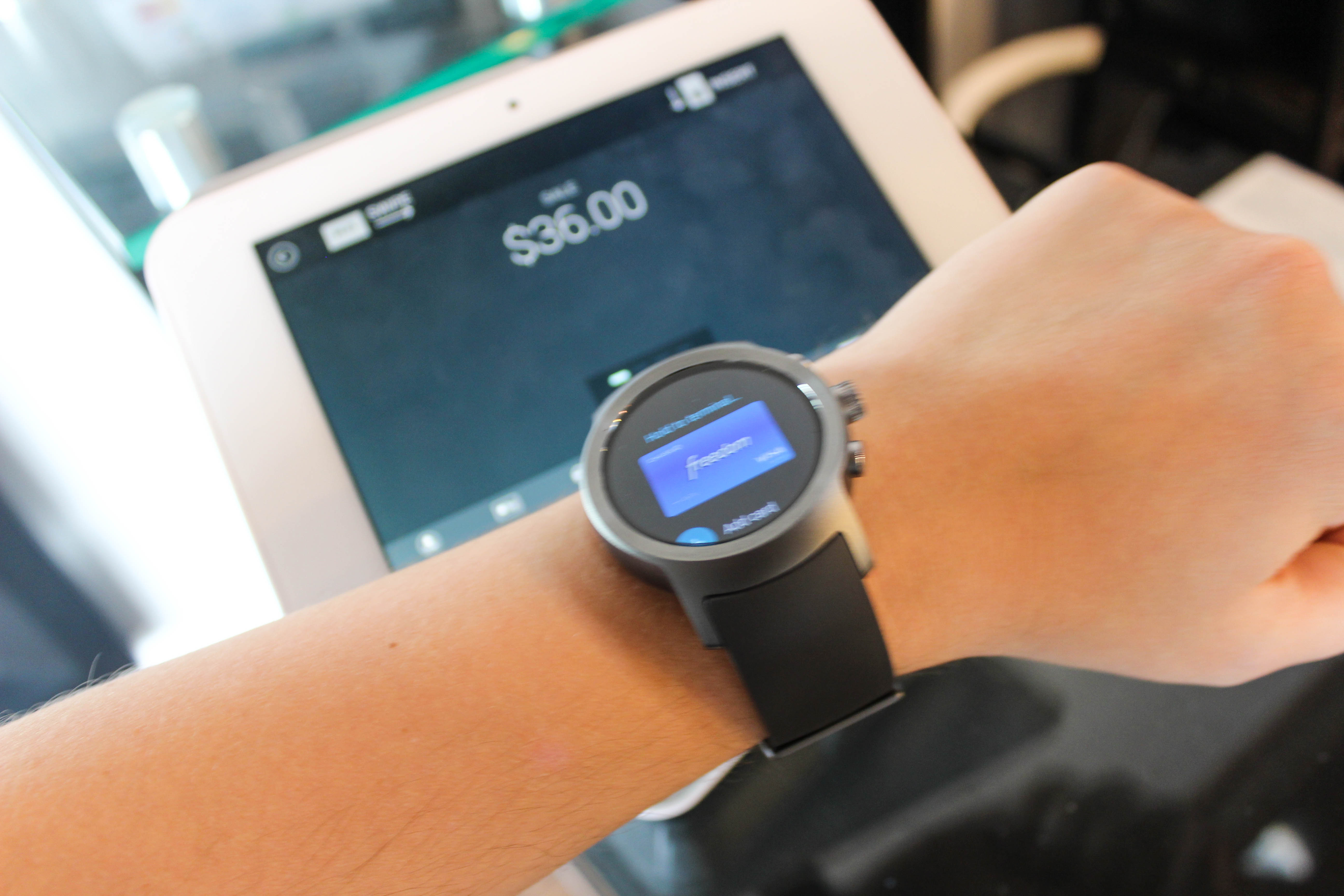
Android Pay works as advertised, as long as you don’t mind a lock screen every time you take the watch on and off. Paying for store items with a watch is a minor but worthwhile convenience it if you have your hands full and want to take advantage of hands-free payments.
Whether you’re searching through the miniaturized Google Play Store for watch apps and faces, or messaging friends, there are new input methods that make navigation more manageable.
Loud environments that once thwarted your dictation are no match for Android Wear 2.0.
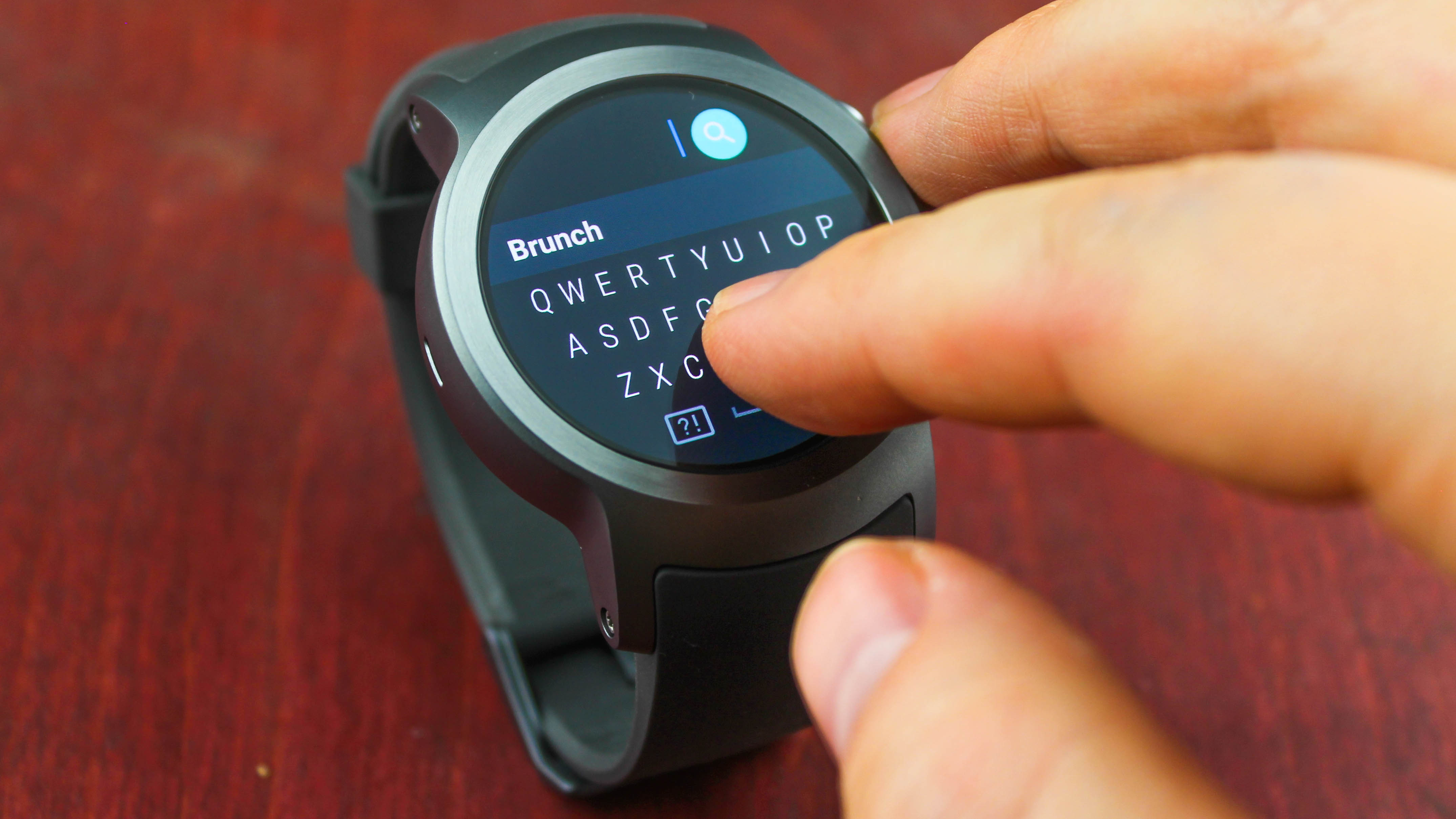
Now you can use a swiping-style keyboard to type out predictive words – it’s incredibly accurate for a cramped keyboard - while handwriting recognition lets you draw out words.
There are hundreds of watch faces in the Google Play Store right now, so if you don’t like the default faces there’s some brilliant artwork on tap to instantly transform your circular LG Watch Sport into something special.
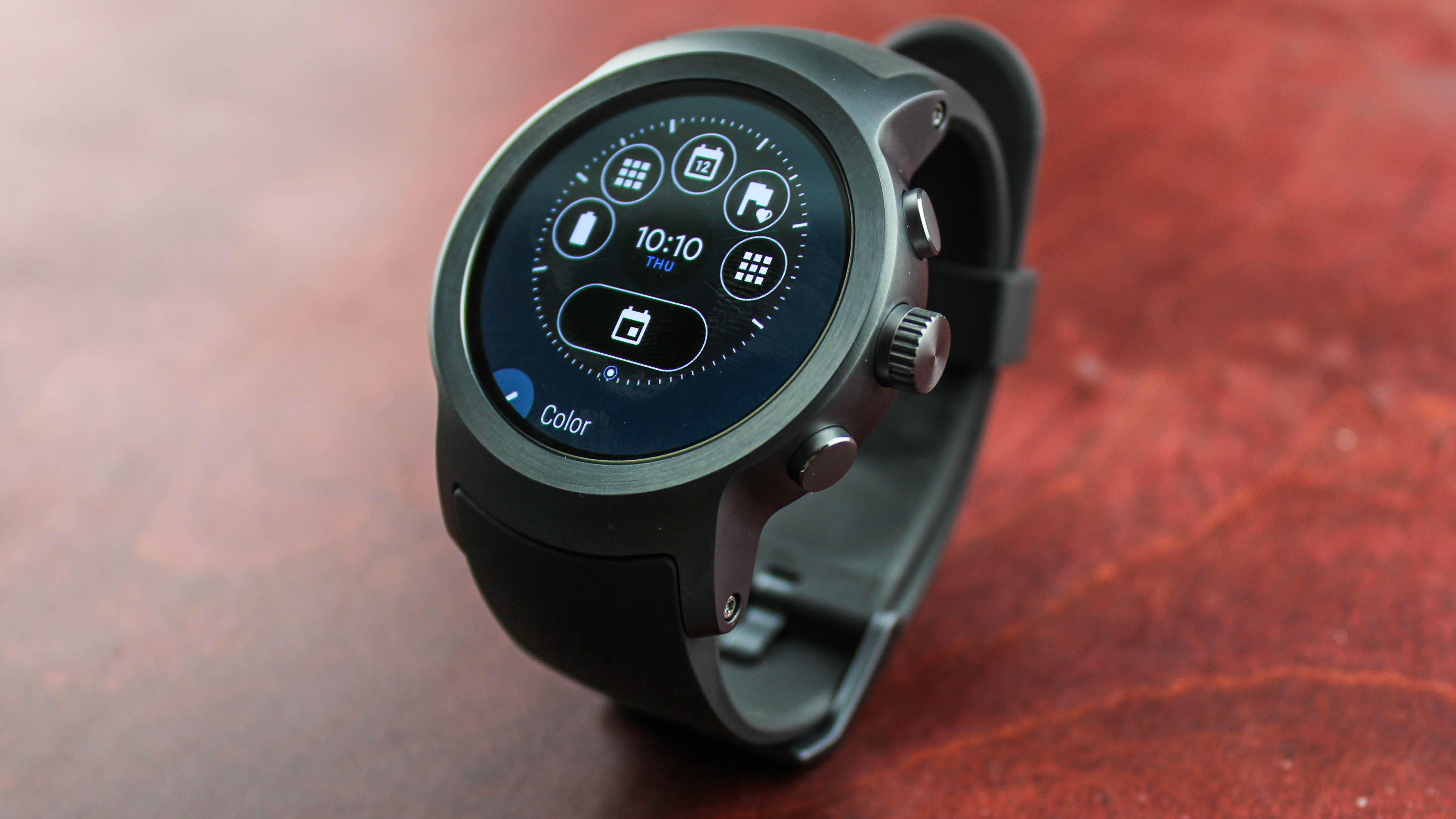
Android Wear 2.0 introduced watch face 'complications', inserting small widgets onto the tiny home screen. With just a glance, we found it easy to see our ongoing activity goals, battery life percentage, the time in other time zones and our next calendar appointment.
A lot of complications – like the weather – are just lifeless app shortcuts though; Apple has more intricate complications in watchOS 4, but Google is catching up fast.
A lack of apps and complications are just two of Android Wear’s holes. Here are a few more missteps:
- You can’t unlock your Mac or Windows computer, something we love about watch OS3 and macOS. (But you can unlock your Android phone or Chromebook with the watch’s ‘trusted device’ feature.)
- You can’t view your phone photos on the watch, or conversely easily take screenshots of the watch to view on your phone. There is a screenshot menu item in the Android Wear (Android only) app, but it doesn’t even work well since it doesn’t automatically save. Clear the lock screen item, and you’ve lost your photo.
- You can’t tinker with watch faces from your phone’s Android Wear app.
- Android Device Manager’s ability to ring your phone should be in the quick settings, not tucked inside the app launcher list. It’s one to favorite for sure if you habitually lose your phone.
Specs and performance
The LG Watch Sport was, at launch, as close as it comes to a flagship Google smartwatch. It had top-of-the-line specs and launched with what was the latest version of Android Wear (now called Wear OS) right out of the box.
That translates into snappy performance, due in part to the Qualcomm Snapdragon 2100 chipset clocked at 1.1GHz and its 768MB of RAM.
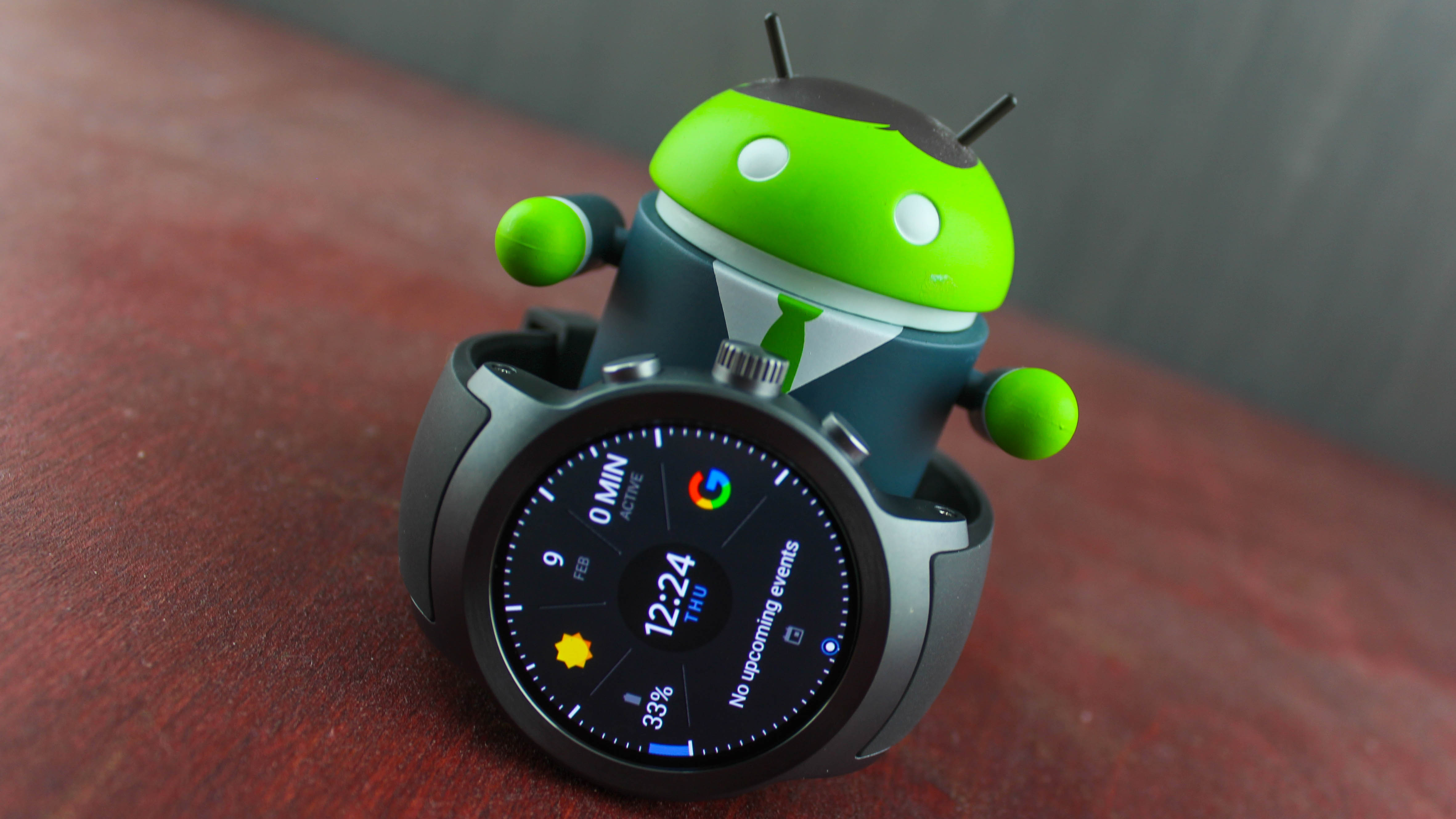
Okay, you don’t really need a faster smartwatch. That’s dumb. But the processor is designed to yield other important benefits, like better battery efficiency while handling heavy-duty tasks like fitness tracking. Now that’s important.
We also ran into less slowdown when transitioning between menus than we did with first-generation of Android Wear watches. The hardware and software upgrades over the last two and a half years have delivered just that.
Note that while these specs are no longer quite at the top of the heap (the new Snapdragon Wear 3100 chipset takes that honor), most smartwatches still have specs similar to the LG Watch Sport, so while it doesn't stand above most rivals any more it's still competitive with them.
There are a lot of sensors and antennas packed into this watch: an accelerometer, a gyroscope, a heart rate monitor, a GPS chip, NFC and an ambient light sensor. The latter is tucked behind the screen for space-saving efficiency. LG also squeezed in a barometer for altitude tracking.
As with specs, these features can now be found on many other wearables, but the fact that the Watch Sport was ahead at launch means it's still competitive with newer smartwatches.
Calls
Opening the back of the LG Watch Sports (using a special tool) reveals a nano SIM card tray where the gears would be on a traditional watch.
We were able to make calls directly from the smartwatch, without our phone nearby. But you’ll have to buy a second nanoSIM card unlike with the Apple Watch 4 where no second SIM is needed.
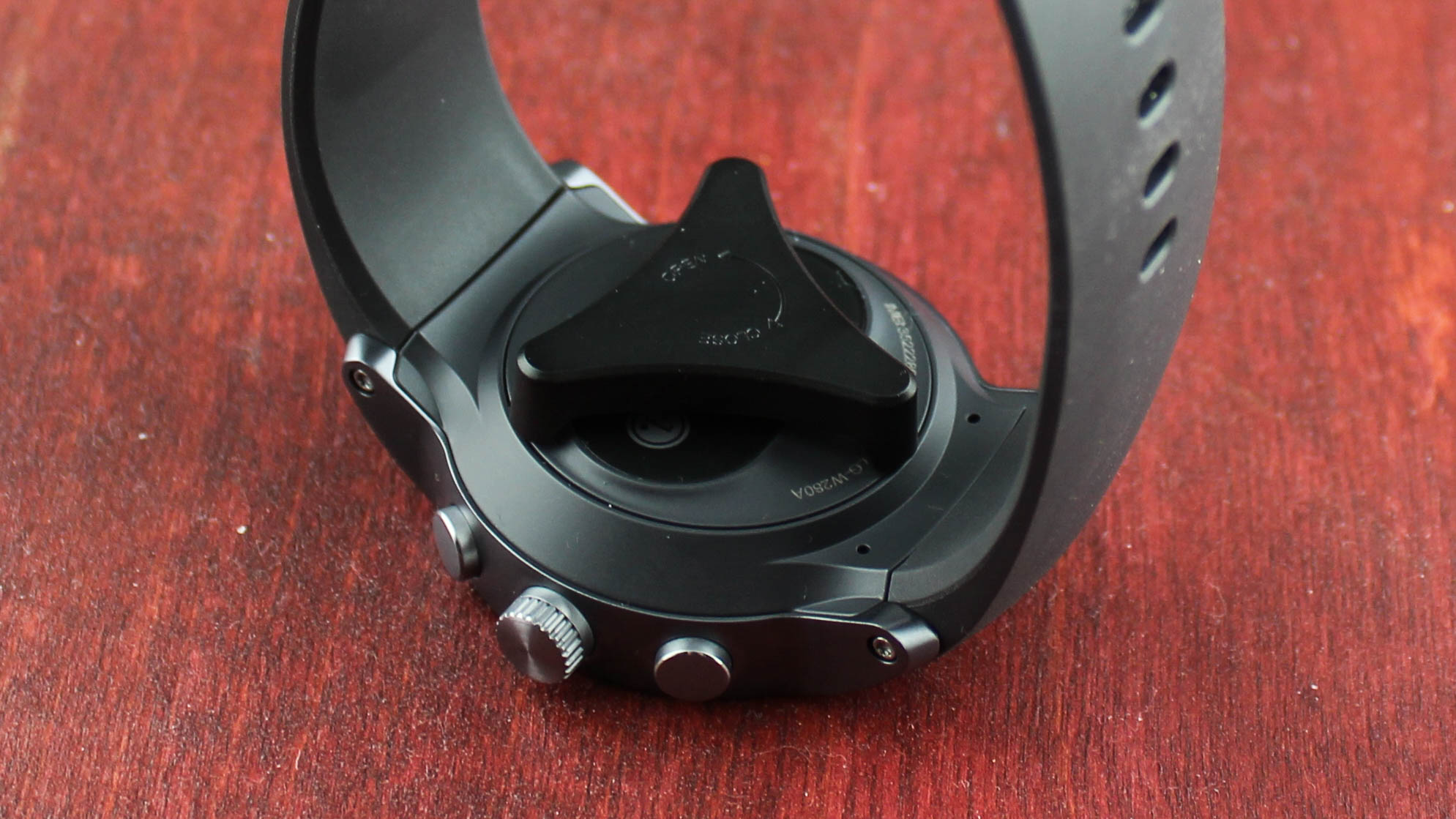
What’s odd is that, without a SIM card installed, we weren’t able to make phone calls while connected to our phone or Wi-Fi.
How did calls sound? Okay. The microphone and speaker made both sides of the conversation sound as if they were on speakerphone; there was no hiding it. However, voices sounded clear, and the speaker gets loud enough if you’re not in a crowded room or city. Otherwise, you’re going to be holding your watch to your ear like a weirdo. Don’t do that.
Cellular calls and data are unique selling points for the LG Watch Sport, and other watches down the line are going to embrace the idea. But, in the immediate future at least, we have to question if people are willing to pay an extra monthly charge, and sometimes leave their phone at home... if you do that, there’s no way to view funny cat videos while you’re waiting in line at the store.
Compatibility
There’s a very good chance that your Android phone will work just fine with the LG Watch Sport. Wear OS is compatible with devices running Android 4.4 or higher.
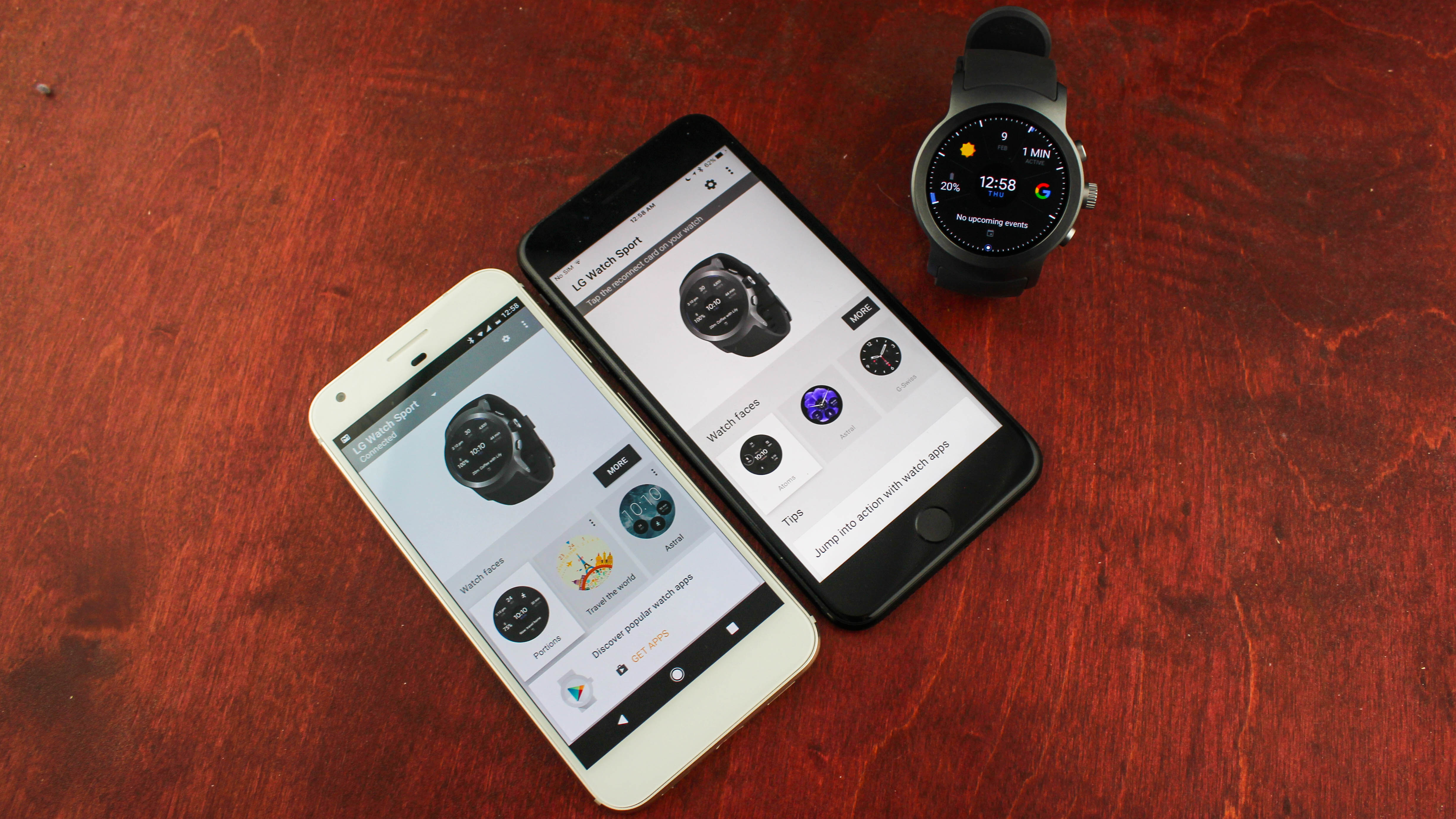
Google’s operating system even works across the aisle by pairing with an iPhone. It’s great for receiving notifications, and the fact that standalone apps can be installed directly onto the watch does bypass one Apple limitation.
However, we couldn’t do everything we wanted to on our iPhone. Notably when paired with an iPhone you can't reply to to iMessages.
It’s great to see that Google is finding ways to make its watches work with the iPhone, but you’re probably better off with the Apple Watch 4 if you’re looking for an iPhone-compatible smartwatch.
Current page: Wear OS, specs and compatibility
Prev Page Introduction, design and display Next Page Fitness and battery life